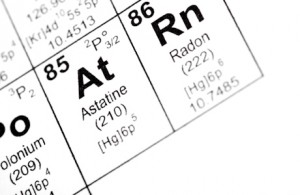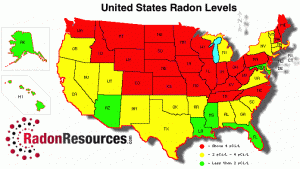Just in time for National Radon Action month, a new disclosure law in Minnesota went into effect requiring home sellers to inform buyers whether or not they’ve tested for radon gas, and if so what levels were discovered and has the home been mitigated to lower them. The law went into effect on January 1, 2015.
The Minnesota Radon Awareness Act Protects Home Buyers from the Dangers of Radon Gas
 Why is this such a big deal? Nevermind the fact that radon gas is the second leading cause of lung cancer in the United States, responsible for the deaths of more than 21,000 each year. In just the first nine months of 2014, well over 2,389 homes were modified with mitigation systems to reduce levels of the deadly gas. That’s a huge increase in the average over the two years prior, at 1,279 homes. Long story short, lots of homes in the area have been tested, and mitigation systems have been installed to remove elevated levels of the deadly gas.
Why is this such a big deal? Nevermind the fact that radon gas is the second leading cause of lung cancer in the United States, responsible for the deaths of more than 21,000 each year. In just the first nine months of 2014, well over 2,389 homes were modified with mitigation systems to reduce levels of the deadly gas. That’s a huge increase in the average over the two years prior, at 1,279 homes. Long story short, lots of homes in the area have been tested, and mitigation systems have been installed to remove elevated levels of the deadly gas.
If you happen to move into one of the many homes that have been modified, you want to be aware what the levels were before, and what they are currently. If those mitigation systems fail, or have been installed improperly there’s a chance the radon gas levels may still be high. Since elevated radon gas levels are hazardous to one’s health, it’s a good idea to be aware of what you’re walking into.
The law, called the Minnesota Radon Awareness Act also requires sellers to provide a specific warning statement along with a two-page publication on the dangers of radon gas to each buyer. The hope is that this will raise awareness about the problem, and protect those who are purchasing and moving into new homes.
Radon Gas is a Concern for All Homeowners
 You’d be surprised to find out that about every two out of five homes in Minnesota have elevated radon gas levels. It is an odorless, colorless and tasteless radioactive gas that seeps into homes from the soil underneath. It’s released as a natural decay product of various elements such as Uranium, commonly found in soil and rock. Because the gas is so dense, it makes it’s way inside a home through cracks in the floors, foundation and walls where it collects in great amounts. In addition, because the gas is virtually indetectable the only way to discover whether or not it’s a problem in your home is to test for radon with a DIY kit or to hire an experienced mitigation specialist to perform tests.
You’d be surprised to find out that about every two out of five homes in Minnesota have elevated radon gas levels. It is an odorless, colorless and tasteless radioactive gas that seeps into homes from the soil underneath. It’s released as a natural decay product of various elements such as Uranium, commonly found in soil and rock. Because the gas is so dense, it makes it’s way inside a home through cracks in the floors, foundation and walls where it collects in great amounts. In addition, because the gas is virtually indetectable the only way to discover whether or not it’s a problem in your home is to test for radon with a DIY kit or to hire an experienced mitigation specialist to perform tests.
Breathing in concentrated amounts of radon gas over an extended period of time, can eventually lead to lung cancer. This is because it increases the risk for the disease exponentially. Exposure to the recommended action limit of 4.0 pCi/L — as set by the US EPA — is the equivalent of smoking nearly a half a pack of cigarettes per day. For exposure to every additional 15 pCi/L, it’s the equivalent of smoking another full pack of cigarettes. You can see how it adds up, greatly increasing your risk for contracting lung cancer.
Test Your Home for Radon Gas Today
It is estimated that there are about 100,000 home sales every year in Minnesota. Thanks to this new law, home buyers — and even some sellers — will become acquainted with the dangers of this silent killer and learn how to prevent any serious health complications from it. Keep in mind, exposure to the deadly gas can be easily prevented. Testing and mitigation is not as costly as one might think either, so don’t be afraid to explore those options.


